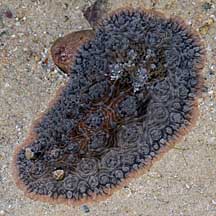Well, this is awkward...
I had planned to make this some type of long term commitment. But apparently, commitment isn't my thing. I got enlisted... POPed and some other stuff happened. Kinda slacked off.
Anyway, I've been wanting to go back to Pulau Semakau for weeks. And I finally got the chance to go with Team Seagrass! I was so hyped for the whole of this week. I learnt how to tie a Shemagh to beat the mosquitoes and the heat (http://bit.ly/113IU18 , if you're interested). I packed everything on Friday and slept early.
Saturday, I woke up at 0430 (I have to use this format, now that I'm in the military) and set off to Marina South Pier. I was going to go there with my friend, Yu Hui. We had agreed to meet at Simei MRT at 0515.
The time was 0525. Yu Hui was nowhere to be seen. So I called him up.
"Dude, where are you? We're gonna miss our ride!"
"What? Isn't the trip tomorrow?"
Dammit.
Well, at least I called him at Simei... Anyway, I walked back home, my head hung low.
I decided not to waste my early Reveille and decided to visit Pasir Ris mangrove instead. So, armed with my trusty camera and my other not-so-trusty camera, I set off.
I got to Pasir Ris, which had a strange mist hanging around. Not a haze, though.
I waited for the sun to rise a little bit more, to allow for my primitive eyes to actually see something and strode into the boardwalk.
At first sight, there wan't much to see. An old uncle doing taichi. Some cleaners. I saw the occasional mud crab.
As I went further, I saw more and more grumpy mudskippers.
And then, BOOM! I got what I came for. I saw a juvenile water snake in the small stream of water. Can't tell exactly what it is, but I see them occasionally in that stream. It might mean that they're reproducing.
While they are easier to see than terrestrial snakes, I find water snakes much harder to photograph. At any rate, this was a real treat.
At that moment, my camera died. Curses.
So I went to the jetty to do some snakespotting/birdwatching.
As far as snakespotting was concerned, I saw two more dog-faced water snakes! Haven't seen them in months... Other reptiles were several monitor lizards, which were active despite the chilly conditions and a tiny red eared slider.
I could hear a lot of birds. But the mist made it harder for me to find them. At the end, I managed to find 2 grey herons, a striated heron, a common kingfisher (which was huge), several parakeets and even some cockatoos.
So after that, I walked back to Simei. All in all, not a bad day. Could have done with some more juice in my camera.
I wish I could have revived this blog with a little bit more pomp (SEMAKAAAAAAUUUUUU), but this will do, I guess... I'll be going to Semakau tomorrow. Let's see if I can make a blog post about it.
I had planned to make this some type of long term commitment. But apparently, commitment isn't my thing. I got enlisted... POPed and some other stuff happened. Kinda slacked off.
Anyway, I've been wanting to go back to Pulau Semakau for weeks. And I finally got the chance to go with Team Seagrass! I was so hyped for the whole of this week. I learnt how to tie a Shemagh to beat the mosquitoes and the heat (http://bit.ly/113IU18 , if you're interested). I packed everything on Friday and slept early.
Saturday, I woke up at 0430 (I have to use this format, now that I'm in the military) and set off to Marina South Pier. I was going to go there with my friend, Yu Hui. We had agreed to meet at Simei MRT at 0515.
The time was 0525. Yu Hui was nowhere to be seen. So I called him up.
"Dude, where are you? We're gonna miss our ride!"
"What? Isn't the trip tomorrow?"
Dammit.
Well, at least I called him at Simei... Anyway, I walked back home, my head hung low.
I decided not to waste my early Reveille and decided to visit Pasir Ris mangrove instead. So, armed with my trusty camera and my other not-so-trusty camera, I set off.
I got to Pasir Ris, which had a strange mist hanging around. Not a haze, though.
I waited for the sun to rise a little bit more, to allow for my primitive eyes to actually see something and strode into the boardwalk.
At first sight, there wan't much to see. An old uncle doing taichi. Some cleaners. I saw the occasional mud crab.
 |
| A bit hard to see, but it was pretty dark. |
 |
| This one was chasing another mudskipper away. The dorsal fin was going up and down. Pity there wasn't a push-up competition. |
At that moment, my camera died. Curses.
So I went to the jetty to do some snakespotting/birdwatching.
As far as snakespotting was concerned, I saw two more dog-faced water snakes! Haven't seen them in months... Other reptiles were several monitor lizards, which were active despite the chilly conditions and a tiny red eared slider.
I could hear a lot of birds. But the mist made it harder for me to find them. At the end, I managed to find 2 grey herons, a striated heron, a common kingfisher (which was huge), several parakeets and even some cockatoos.
So after that, I walked back to Simei. All in all, not a bad day. Could have done with some more juice in my camera.
I wish I could have revived this blog with a little bit more pomp (SEMAKAAAAAAUUUUUU), but this will do, I guess... I'll be going to Semakau tomorrow. Let's see if I can make a blog post about it.

























































